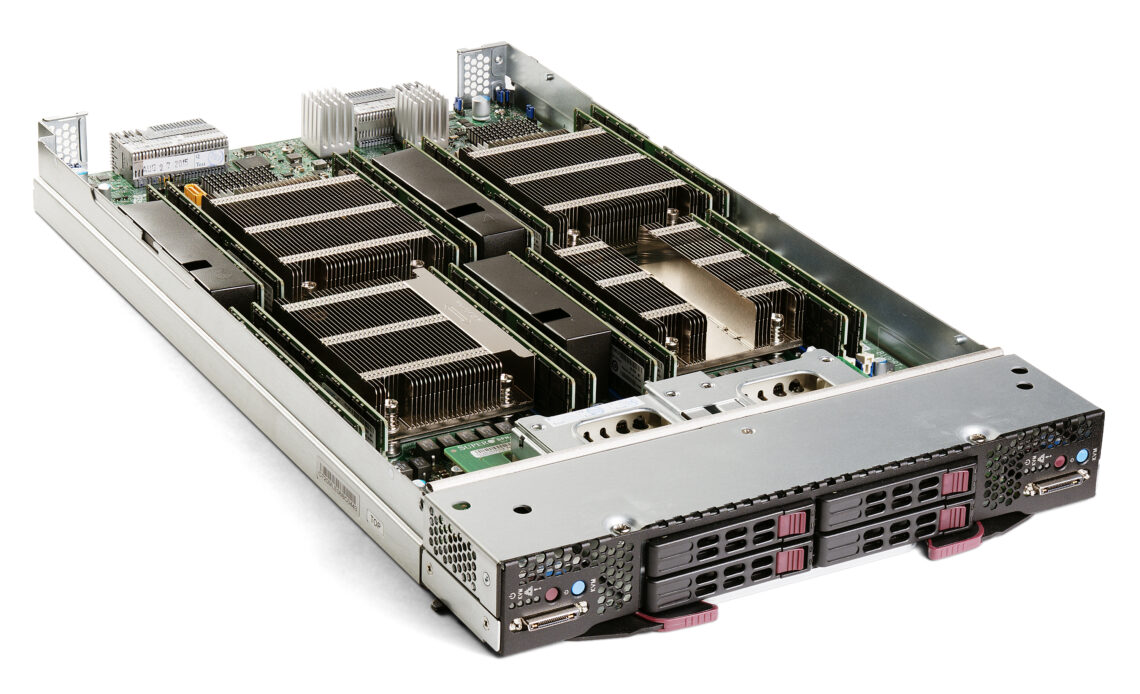
Efficiently Manage Your Data Center with Blade Servers
What is a blade server?
A blade server is a type of computer server that is housed within a single chassis that can hold multiple modular circuit boards, called server blades. Each blade is essentially an individual server that can be easily added or removed from the chassis. Blade servers are designed to save space, reduce power consumption, and simplify management in data center environments. They are often used in enterprise settings where large amounts of computing power are needed and space is limited.
Blade server technology
Blade server technology is a server architecture that utilizes a modular design to house multiple server blades within a single chassis. Each blade is essentially an independent server, with its own processors, memory, storage, and network connections. Blade servers are designed to be highly scalable and efficient, allowing organizations to easily add or remove servers as needed, without requiring significant changes to the physical infrastructure.
One of the key benefits of blade server technology is its ability to reduce the physical footprint of the server infrastructure since multiple blades can be housed within a single chassis. This can help organizations save valuable data center space, reduce power consumption, and simplify management.
Blade servers also offer improved performance and flexibility compared to traditional rack-mount servers. They can be easily configured to support a wide range of applications and workloads, making them a popular choice for enterprise data center environments.
Overall, blade server technology represents a significant advancement in server architecture, allowing organizations to efficiently and effectively manage their computing resources cost-effectively.
Benefits of blade servers
Blade servers offer several benefits for organizations looking to improve their server infrastructure. Some of the key benefits of blade servers include:
Space Efficiency:
Blade servers are designed to be highly space-efficient, allowing multiple servers to be housed within a single chassis. This can help organizations save valuable data center space, which can be particularly important in situations where physical space is limited.
Scalability:
Blade servers are highly scalable, which means that organizations can easily add or remove servers as needed, without requiring significant changes to the physical infrastructure. This can help organizations adjust their computing resources to meet changing business needs.
Power Efficiency:
Blade servers are typically more power-efficient than traditional rack-mount servers, which can help organizations reduce their energy costs and minimize their carbon footprint.
Easy Management:
Blade servers are designed to be easy to manage, with centralized management tools that allow administrators to monitor and configure multiple servers from a single location. This can help organizations streamline their server management processes and reduce the time and resources required to maintain their infrastructure.
High Performance:
Blade servers offer high levels of performance, with the ability to support a wide range of applications and workloads. This can help organizations improve their overall computing performance and support more complex workloads.
Overall, blade servers represent a significant advancement in server architecture, offering a range of benefits for organizations looking to improve their server infrastructure. By leveraging the benefits of blade servers, organizations can improve their computing efficiency, reduce costs, and better support their business needs.
Blade server pricing
The pricing of blade servers can vary widely depending on several factors, including the brand, configuration, and specifications of the server. In general, blade servers are more expensive than traditional rack-mount servers, due to their advanced design and the additional hardware required to support multiple server blades within a single chassis.
The cost of a blade server can range from a few thousand dollars to tens of thousands of dollars, depending on the specific model and configuration. Entry-level blade servers can typically be purchased for around $2,000 to $5,000, while high-end models can cost upwards of $20,000 or more.
It’s worth noting that the cost of blade servers can be offset by the benefits they offer in terms of space efficiency, scalability, and performance. By reducing the physical footprint of the server infrastructure, organizations can save money on data center costs, while the ability to easily scale up or down can help organizations optimize their computing resources and minimize waste.
Ultimately, the pricing of blade servers will depend on a variety of factors, and organizations should carefully consider their needs and budget when selecting a server solution.
Blade server storage
Blade servers typically utilize a shared storage architecture, where storage resources are pooled and made available to all server blades within the same chassis. This shared storage approach can help organizations optimize their storage resources and reduce costs, while also improving the scalability and flexibility of the server infrastructure.
Several different types of storage solutions can be used with blade servers, including:
Direct-Attached Storage (DAS):
In a DAS configuration, storage devices are directly attached to the server blades within the chassis, allowing for high-speed access to data. This approach can be particularly useful for applications that require fast read and write speeds.
Storage Area Networks (SANs):
A SAN is a centralized storage network that is shared by multiple server blades. SANs offer high levels of storage capacity and scalability, and can be used to support a wide range of applications and workloads.
Network-Attached Storage (NAS):
A NAS is a storage device that is connected to a network and provides shared access to storage resources. NAS solutions can be useful for organizations that require a centralized storage solution for backup, archiving, or other data management tasks.
Overall, the storage options available for blade servers can help organizations optimize their storage resources and improve the performance, scalability, and flexibility of their server infrastructure. By carefully considering their storage needs and selecting the right storage solution for their environment, organizations can ensure that their blade servers provide the best possible performance and value.
Read also :- The most popular Essentials hoodies of 2023
Conclusion
Blade servers offer many benefits for organizations looking to improve their server infrastructure, including space efficiency, scalability, power efficiency, easy management, and high performance. While the pricing of blade servers can be higher than traditional rack-mount servers, their advanced design and shared storage architecture can help organizations optimize their computing resources and reduce costs over time.
When selecting a blade server solution, it’s important to carefully consider your organization’s needs and budget, as well as the specific features and capabilities of different models. By taking the time to select the right blade server solution, organizations can improve their computing efficiency, reduce costs, and better support their business needs.




